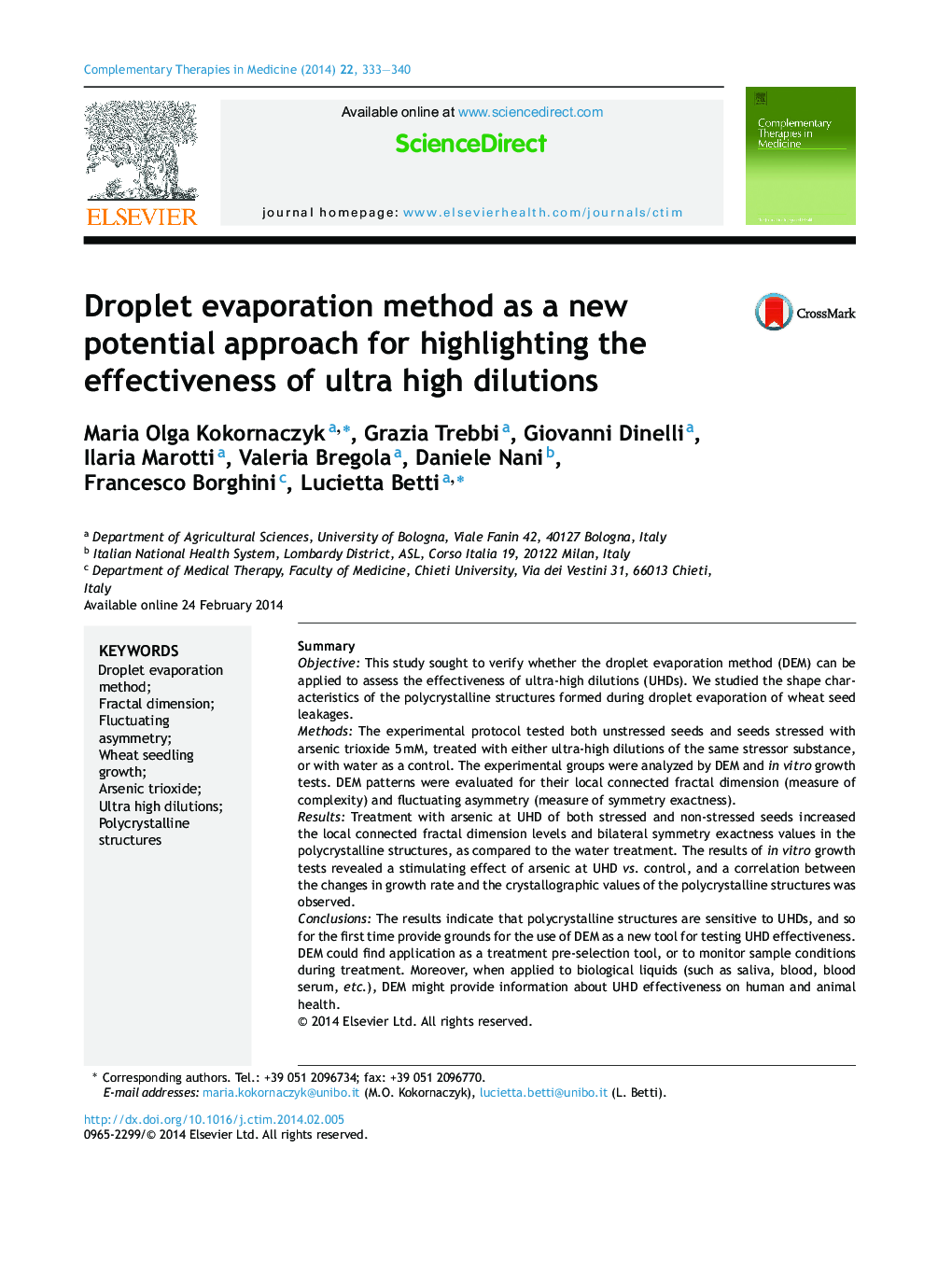| Article ID | Journal | Published Year | Pages | File Type |
|---|---|---|---|---|
| 5865596 | Complementary Therapies in Medicine | 2014 | 8 Pages |
SummaryObjectiveThis study sought to verify whether the droplet evaporation method (DEM) can be applied to assess the effectiveness of ultra-high dilutions (UHDs). We studied the shape characteristics of the polycrystalline structures formed during droplet evaporation of wheat seed leakages.MethodsThe experimental protocol tested both unstressed seeds and seeds stressed with arsenic trioxide 5Â mM, treated with either ultra-high dilutions of the same stressor substance, or with water as a control. The experimental groups were analyzed by DEM and in vitro growth tests. DEM patterns were evaluated for their local connected fractal dimension (measure of complexity) and fluctuating asymmetry (measure of symmetry exactness).ResultsTreatment with arsenic at UHD of both stressed and non-stressed seeds increased the local connected fractal dimension levels and bilateral symmetry exactness values in the polycrystalline structures, as compared to the water treatment. The results of in vitro growth tests revealed a stimulating effect of arsenic at UHD vs. control, and a correlation between the changes in growth rate and the crystallographic values of the polycrystalline structures was observed.ConclusionsThe results indicate that polycrystalline structures are sensitive to UHDs, and so for the first time provide grounds for the use of DEM as a new tool for testing UHD effectiveness. DEM could find application as a treatment pre-selection tool, or to monitor sample conditions during treatment. Moreover, when applied to biological liquids (such as saliva, blood, blood serum, etc.), DEM might provide information about UHD effectiveness on human and animal health.
